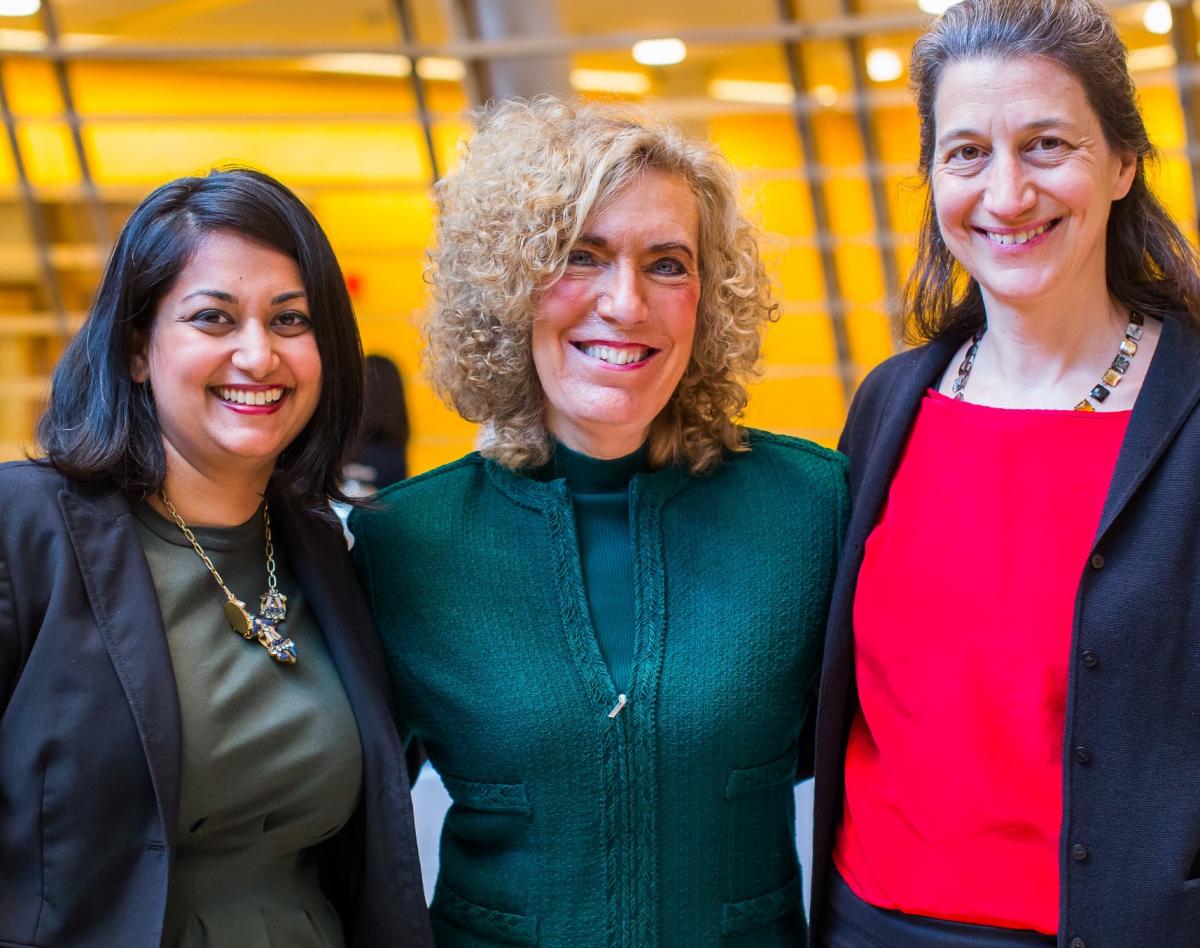Gone Girl
Shruti Naik, PhD, Damon Runyon Fellow, Rockefeller University
I was recently asked by Lorraine Egan to serve on a panel for women in STEM at her daughter’s school. The girls’ enthusiasm and curiosity for science was unmistakable. “How do you design an experiment?”, “What do you like about research?”, “How do you identify mentors?”. Their ardent inquiries were nothing but reassuring. I thought, “If these girls represent the future, then the future of women in science is secure!” Enjoying this blissful moment I walked back to my research institute and was promptly jolted back to reality.
The U.S. is now graduating more young women with undergraduate degrees in the biological sciences than men (mathematics and physics are still lagging). Even graduate schools in biomedical science have seen a surge of female trainees over the past decade. Yet, when we look to the top of the academic ladder, which means the heads of laboratories, departments, and institutes, the numbers are abysmal. Women still represent only a small fraction of the leadership. So why aren’t the numbers matching up?
Attrition among female trainees is seen at every career transition after graduate school, as we become postdoctoral fellows, transition to faculty positions, and then go up for tenure. This gender specific exodus can be traced to many overlapping factors. From the start women receive less visibility. For instance, women are less likely to receive credit for their work in the form of publication authorship in graduate school, a key measure of accomplishment in science. Women scientists have greater difficulty obtaining research funding and publishing in high-impact journals. Women scientists are often paid less and promoted less frequently. Moreover, these career phases dovetail with child rearing, and demands of balancing work and family life disproportionately affect women. Some perfect storm of these deterrents derails women from their academic career trajectories. Don’t get me wrong: many women trained in biomedical research choose to pursue careers outside academia. These jobs are fulfilling, important, and contribute greatly to the scientific enterprise. But for the women who want to stay, the opportunities and support systems aren’t always there.
My journey has been nothing short of a scientific fairy tale. My graduate and postdoctoral mentors, Drs. Elaine V. Fuchs (Damon Runyon Fellow- 1977-1979), Yasmine Belkaid and Julie Segre (Damon Runyon Fellow- 1997–2000), are strong women scientists at the very forefront of their fields. By nurturing my skills and empowering me to take intellectual and scientific risks, they have trained me to perform cutting-edge science. Moreover, by virtue of working in their labs, I have had inspiring role models, a luxury not afforded to many female trainees. The Damon Runyon Cancer Research Foundation has unabashedly supported my research (and that of Elaine and Julie’s during their postdoctoral training). In fact, over the past decade ~40% of the fellowship recipients have been female. Beyond financial support, the Foundation has given me tremendous visibility and credibility as a scientist that has immeasurably aided my career.
These experiences have lead to me to believe that intelligence and hard work, are not enough; the X factors plays a larger role than we would like to admit. In this regard, the “simplest” solution is to critically evaluate and correct the culture and environment in which we train scientists. First and foremost, shifting the conversation from what the individual can do to what the institution must do is prerequisite to increasing the number of women who pursue STEM careers at the highest levels. Here I am using “institution” as a broad term encompassing research and medical centers, funding agencies, peer reviewed journals, and even individual research labs. These entities have to acknowledge and tackle challenges specifically faced by female trainees. For instance, providing childcare support in the form of day care subsidies and technical assistance for primary childcare givers can help offset the demands of family life. Unconscious bias training and gender-balanced hiring committees will enable equal career advancement of female trainees. Travel and career development awards for women to promote networking, gain exposure, and cultivate advocates. As scientists, both men and women, it is incumbent upon us to hold our organizations accountable and encourage them to systematically combat gender bias by instituting programs and policies that stop female trainees from falling through the cracks.
I say let’s not just get girls interested in science but give them the support to stay there. Prepare them for ascension to the very tops of their fields, where they can bring their unique perspectives to making scientific breakthroughs and finding cures.

